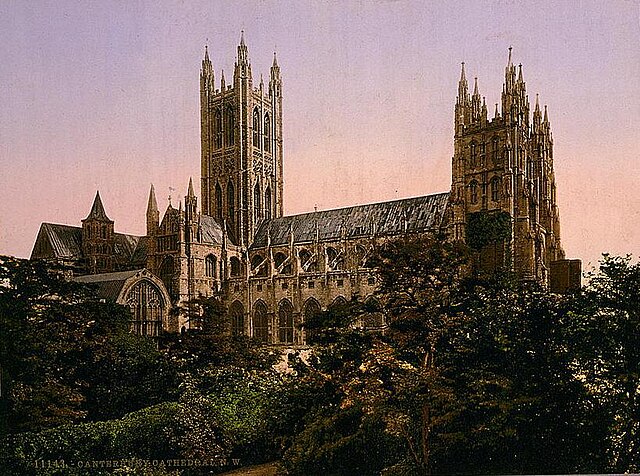"The Pardoner's Tale" is one of The Canterbury Tales by Geoffrey Chaucer. In the order of the Tales, it comes after The Physician's Tale and before The Shipman's Tale; it is prompted by the Host's desire to hear something positive after the physician's depressing tale. The Pardoner initiates his Prologue—briefly accounting his methods of swindling people—and then proceeds to tell a moral tale.
The Pardoner, from Ellesmere Manuscript of Chaucer
The Pardoner, as depicted by William Blake in The Canterbury Pilgrims (1810)
The Canterbury Tales is a collection of twenty-four stories that runs to over 17,000 lines written in Middle English by Geoffrey Chaucer between 1387 and 1400. It is widely regarded as Chaucer's magnum opus. The tales are presented as part of a story-telling contest by a group of pilgrims as they travel together from London to Canterbury to visit the shrine of Saint Thomas Becket at Canterbury Cathedral. The prize for this contest is a free meal at the Tabard Inn at Southwark on their return.
A Tale from the Decameron by John William Waterhouse
Canterbury Cathedral from the north west c. 1890–1900 (retouched from a black & white photograph)
Title page of Geoffrey Chaucer's Canterbury Tales in the hand of "Scribe B", identified as Adam Pinkhurst, c. 1400.
The Peasants' Revolt of 1381 is mentioned in the Tales.






